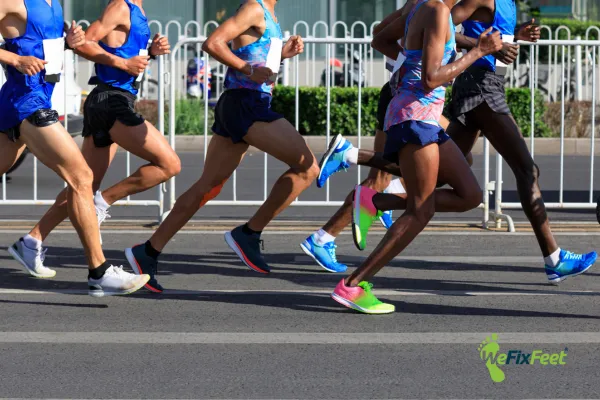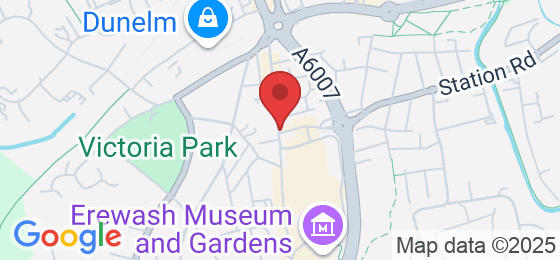
Why Does My Ankle Hurt Whilst Working Out?
Ankle pain is a workout destroyer. Whether you’re smashing a personal best on the treadmill or perfecting your form during a weightlifting session, that persistent ache or sharp twinge in your ankle can stop you in your tracks or lifting those weights. But why does it happen, and what can you do about it?
In this blog, we’ll explore common causes of ankle pain during exercise, practical treatments to ease discomfort, and tips for keeping workouts pain-free.
What Are the Common Causes of Ankle Pain Whilst Working Out?
Ankle pain can strike for several reasons, and pinpointing the cause is the first step to recovery. Here are some common culprits:
Sprains: A sudden twist or roll of the ankle can overstretch ligaments, causing pain and swelling. Sprains are especially common during dynamic sports or workouts on uneven terrain.
Tendonitis: Repetitive stress from running or jumping can inflame the tendons, particularly the Achilles or peroneal tendons, leading to sharp or persistent pain.
Impingement Syndrome: Pain at the front or back of the ankle can indicate impingement, where soft tissues get compressed during movement.
Stress Fractures: Tiny cracks in the ankle bones, often caused by overtraining or insufficient recovery, can result in ongoing discomfort.
Arthritis: For those with previous injuries, wear-and-tear arthritis can cause stiffness and pain during activity.
Home Remedies for Ankle Pain Relief
If you’re experiencing ankle pain, there are several things you can do at home to manage the discomfort before seeking professional help. Here are some practical remedies:
1. Rest and Ice
Give your ankle a break. Resting can prevent further irritation while icing the area for 15-20 minutes every few hours can help reduce swelling and pain. Consider using a cold compression wrap to combine cooling and gentle compression for added benefit.
2. Elevation and Compression
Elevating your ankle above heart level can help reduce swelling by improving circulation. Use a compression bandage or wrap to provide additional support and minimise movement that could aggravate the pain.
3. Gentle Stretching
Simple stretches can alleviate stiffness and improve ankle mobility. Here are a few to try:
Ankle Circles: Sit with your leg extended and rotate your ankle clockwise and counterclockwise. Perform 10 rotations in each direction.
Achilles Stretch: Stand facing a wall, place your hands on the wall, and step one foot back. Keep your heel on the ground as you lean forward to stretch the back of your ankle.
Towel Stretch: Sit on the floor, loop a towel around the ball of your foot, and gently pull it toward you to stretch your calf and ankle.
4. Strengthening Exercises
Building strength in the surrounding muscles can improve stability and reduce the risk of future injuries. Here are some practical exercises:
Calf Raises: Stand on the edge of a step and slowly raise and lower your heels. For an added challenge, start with both feet and progress to one foot.
Resistance Band Work: Use a resistance band to flex and extend your ankle, targeting stabilising muscles.
Single-Leg Balances: Practice balancing on one foot for 30 seconds. To make it harder, close your eyes or stand on an unstable surface, such as a cushion.
5. Footwear Check
Wearing the right shoes is critical. Ensure your footwear is designed for your specific activity, with adequate cushioning, arch support, and a snug fit around the ankle. Replace worn-out shoes regularly to maintain proper support.
6. Anti-Inflammatory Measures
Over-the-counter anti-inflammatory medications, such as ibuprofen, can help reduce pain and swelling. Always follow the dosage instructions and consult a healthcare professional if needed.
Tips for Preventing Ankle Pain During Workouts
Prevention is always better than cure. To protect your ankles during exercise, keep these tips in mind:
Warm Up Thoroughly: Dynamic stretches and mobility exercises prepare your joints and muscles for activity. Incorporate ankle-specific movements like toe taps and ankle rolls.
Progress Gradually: Avoid overloading your body by gradually increasing the intensity and duration of your workouts. Sudden changes in activity levels can put undue stress on your ankles.
Strengthen Regularly: In your weekly routine, include exercises targeting your ankles and surrounding muscles to enhance stability and resilience.
Use Proper Technique: Whether running, lifting weights, or doing yoga, ensure your form is correct. Poor technique can lead to unnecessary strain on your ankles.
Invest in Supportive Gear: If you're prone to injuries, consider wearing ankle braces or supports during high-impact activities in addition to the right shoes.
Listen to Your Body: Pay attention to signs of fatigue or discomfort. Taking a rest day when needed can prevent minor issues from becoming major problems.
When to Seek Professional Help
While home remedies can help manage mild ankle pain, persistent or severe discomfort may require professional care. In-clinic treatments can provide targeted solutions, including:
Biomechanical Assessments: To identify underlying issues with gait or alignment.
Custom Orthotics: To provide tailored support for your feet and ankles.
Shockwave Therapy: A non-invasive option to stimulate healing and reduce inflammation.
Sports Massage: Hands-on therapy to relieve tension and improve circulation.
Rehabilitation Plans: Structured programs to strengthen and restore function.
Your Path to Pain-Free Workouts
Ankle pain doesn’t have to hold you back. With the right approach, you can identify the cause, treat the pain, and prevent it from returning. Start with simple home remedies like rest, ice, and strengthening exercises. Pay attention to your body, and don’t hesitate to seek professional advice if the pain persists.
Taking care of your ankles means more than just avoiding pain; it’s about maintaining an active lifestyle and achieving your fitness goals. With patience and consistency, you can return to doing what you love, stronger and more resilient than ever.
Ask The We Fix Feet Team
Fill in the form to request a Call From Our Team
One of our team will call you for FREE and answer any questions or concerns you may have about your uncomfortable foot condition

Where To Find We Fix Feet
Our We Fix Feet podiatry clinics are conveniently located in Ilkeston, Derbyshire and Beeston, Nottinghamshire
Open: Mon-Fri 09:00-17:00 / Sat 09:00-13:00
94 Bath Street, Ilkeston, Derbyshire DE7 8FE
8 Wollaton Road, Beeston, Nottinghamshire NG9 2NR
Pay and display parking nearby




